I got the middle finger.
I was huffing my bike up that steepish hill on Peabody by the Church Health Center. The guy rolled up next to me in his huge, white Dodge pickup, rolled down his window, and yelled “Get off the road, asshole! There ain’t no f—kin’ bike lane here!” He leaned way over and then he gave me the middle finger with his thumb stuck straight out, the style I call Fifth-Grade Rebellion. The huge “Salt Life” sticker on his truck’s rear window told me I was about to spy a Mississippi or Arkansas license plate. Nope. Shelby County. Disappointing. Must have been a Millingtonian.
The light at Peabody and Bellevue turned red, and I caught up to the guy. I was going to tell him all Tennessee roads are bike lanes and to “share the road” and all that. But he’d rolled up his window after calling me an asshole and giving me the Rebellion.
The guy must have thought this hippie-ass bike rider he’d just flipped off was so mad that he was going to invite him to a Greensward protest or force him to try a craft beer.
I glared in at him, relentlessly. But he never looked over. He sat there, eyes and neck frozen straight ahead. The light changed, he floored it, and left me pedaling in a black cloud of diesel smoke.
That was last summer, and I’m happy to report that nothing remotely close to that has happened to me on my dozens of rides since then.
Good Bike People and Middle Fingers
For last year’s Summer Issue, I paddled the Mississippi River with some friends. Before my paddle, Joe Royer, owner of Outdoors Inc., told me that because the river is so close, that Memphians ought to become “good river people.” We should use this amazing asset on our doorstep.
That same logic now applies here to bicycles. Memphis is veined with miles and miles of bike lanes, bike trails, greenways, and more. Whatever you call them, there are more protected places to ride your bike than ever before, and even more venues are on the way.
Gird up your confidence and get out there. If you don’t, you’re missing out. Whether it’s for adventure or transportation, an amazing (and growing) bike network waits for you right outside your front door. Bike riding and bike culture are rising in Memphis now with a fresh and powerful energy. For all of this, Memphians ought to become “good bike people.”
Nearly anyone who has ridden the streets of Memphis has a middle-finger story. Cyclists I talked to all had a story.
Jason Potter, a member of the Boscos Cycling Team, said riding the Memphis streets 10 years ago was “scary.”
“It was a lot of honks, lots of middle fingers, and a lot of yelling,” Potter said. “That made you, as a rider, aggressive, too. I’d yell back at motorists, and you were always on the edge of your saddle riding back then.”
In her hilarious 2014 short film, Where the Bike Lane Ends, Allyson Truly explains that “there is an assumption in Memphis that if you’re riding your bike, it couldn’t possibly be for recreational purposes. Either you’re a crackhead, a crack dealer, desperately unemployed, or all three.”
In the film, Truly examines three types of people cyclists (particularly women cyclists) face in North Memphis: The Creep tries to lure her into his truck. When she rides away instead, he calls her a “Lance-Armstrong-ass-bitch” and a “back-on-the-bike-ass-hoe.” The Angry Driver tells Truly to get her “monkey ass on that damn sidewalk.” The Hater calls her a “basic-ass-bike-riding-ass-hoe.”
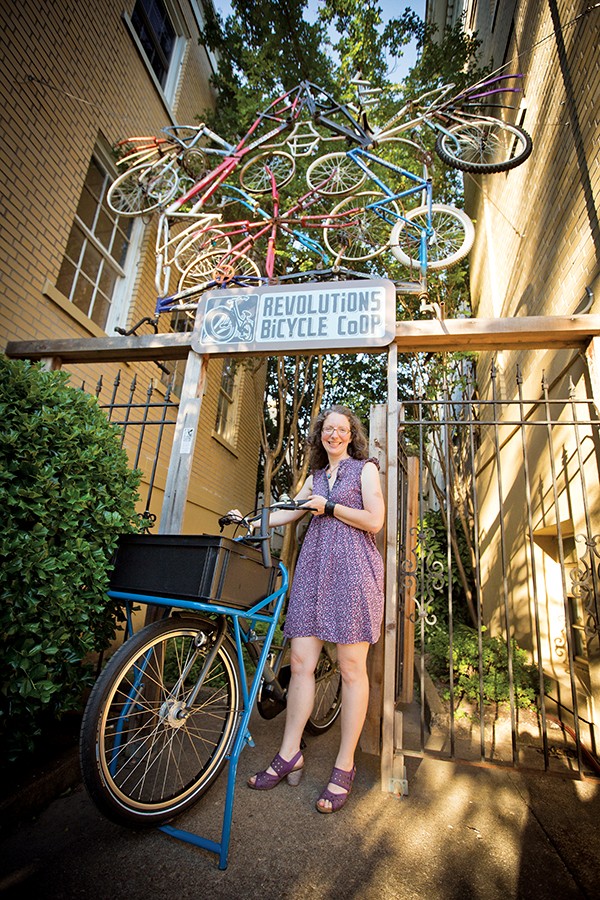 Justin Fox Burks
Justin Fox Burks
Sylvia Crum at Revolutions Bicycle Co-Op
Over at Revolutions Bicycle Co-Op, middle fingers are often a topic of discussion. What to do when you get the finger, specifically, is a question that often arises during the shop’s “How to Ride in the Street” class or series of Women’s Bike Chats, said Revolutions executive director Sylvia Crum.
“There will be nasty drivers who yell mean things to you,” Crum said. “But the more of us who ride, the better it’s going to get because drivers will get more used to seeing us.”
A Finger-less Future?
Still, cyclists said they’ve seen fewer fingers in the past few years.
Marvin Stockwell, an almost daily bike commuter, said “it’s been a long time since I’ve had any hostile thing happen to me from a person in a car.” Like Crum, Stockwell believes motorists have just gotten used to seeing cyclists and that it is becoming “part of our permanent culture,” Stockwell said.
Middle fingers have also likely become less frequent as the number of bike lanes increases. According to the 2016 “State of Bicycling” report from the city of Memphis, bike ridership is up and bike injuries are down.
Bike ridership rose 277 percent from 2010 to 2013, the study said. From 2003 to 2009, there were an average of 93 crashes each year involving a cyclist. Since 2010, when bike lanes began to show up on city streets, the figure has dropped six percent to an average of 88 per year. The decline, according to the study, is thanks to the investments made in bike lanes.
“There are not any geographic trends that tie the crashes together, no locations where crashes are more prevalent,” the study says. “Instead, one trend identified is that 93 percent of bicycle crashes occur where there is not a dedicated bike lane, shared-use path, or off-street trail.”
But if having bike lanes does, indeed, correlate into fewer accidents, Memphis could be in for a more cooperative car/bike future.
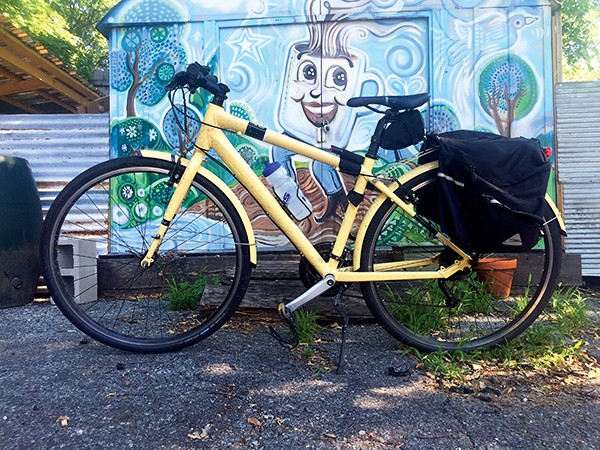
My Ride: Toby Sells, Bike: hybrid, Used for: commuting
Bikes Past and Present
Memphis used to be one of the three worst bike cities in the U.S. Bicycling magazine said so. “No bike lanes exist within the city limits of Memphis,” the magazine said. “And the city government, comprised of layers of bureaucracy, has repeatedly ignored or rejected requests from bike clubs, shops, and other organizations to create facilities.
The magazine said the same thing in 2010. At the time, Memphis had 1.82 miles of bike lanes. But Bicycling credited then-Mayor A C Wharton for getting committed to bike lanes in Memphis and hiring the city’s first bicycling/pedestrian coordinator, Kyle Wagenschutz.
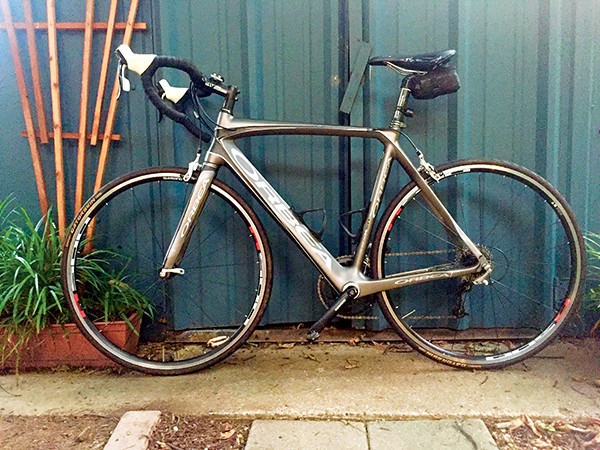
My Ride: Jason Potter, Bike: road bike, Used for: fitness
In the four years after that, the city spent about $262,000 (which helped it leverage $463,000 in grants and gifts) to create 92 miles of new bike lanes and bike paths. Bicycling took notice of the efforts and, in 2012, called Memphis one of the most improved cities for biking. At the end of 2015, there were 208 miles of bike lanes.
Since our bike-lane-building-binge began, some important things have changed, though. Jim Strickland was elected mayor in October, and Wagenschutz left the post as bicycle/pedestrian coordinator for a new job.
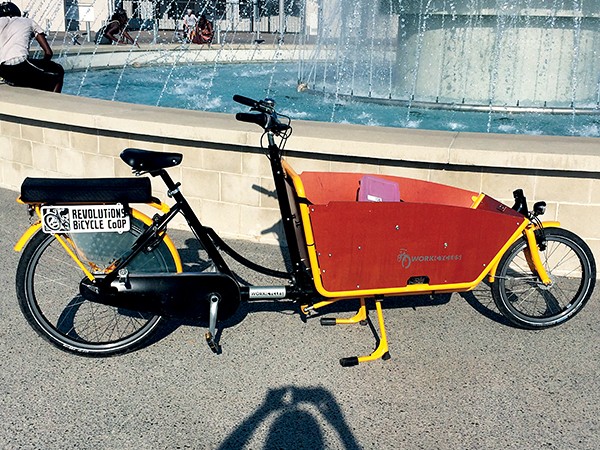
My Ride: Sylvia Crum, Bike: cargo , Used for: everything
But Manny Belen, the interim director of the city’s engineering division, said bicycles and bike lanes remain a priority for the city.
“We are certainly still pursuing and encouraging the use and the infrastructure for our bike network,” Belen said, “certainly as it relates to providing transportation for those who cannot afford vehicles. It’s a way for us to provide that network to connect people with jobs and where the jobs are.”
Belen said his office is still working from the Memphis Urban Area Metro Planning Organization’s 2014 playbook for bike lanes. He said his office is “constantly looking” to expand the bike lane network, and he said city officials are actively looking for a new bicycle/pedestrian coordinator to replace Wagenschutz.

My Ride: Proposed Bike Share, Bike: city/cruiser, Used for: transportation, tourism, and more
Bikes of Memphis’ Future
By the end of 2017, it is projected that Memphis will have 331 miles of bike lanes. But the full scope of promised bike infrastructure in the city and in Shelby County is much larger than that.
This week, local leaders will cut the ribbon on a new 4.5-mile section of the Shelby Farms Greenline. That expansion will connect Midtown to Cordova and make the Greenline the longest continuous bike trail in Shelby County.
The Wolf River Greenway will stretch from Collierville to downtown Memphis by 2019. In October, Big River Crossing is expected to open and give cyclists (and tourists) an unprecedented path over the Mississippi River.
All of the new bike infrastructure is the building block that led Doug Carpenter and his team at DCA to work to bring a bike-share program to Memphis. Carpenter said he hopes to have shared bikes on the streets of Memphis by 2017.
“Adding bike share is a good example of the fact that people are riding bikes and they want to ride bikes and feel that it can be part of their recreation or transportation plan,” said Sara Studdard, a DCA associate.
Local leaders have been at work for years gathering consensus to build and now to implement the Mid-South Greenprint and Sustainability Plan, which hopes to connect much of this existing bike infrastructure and more. When it’s finished in 2040, the Greenprint plan will have installed 500 miles of off-street bike trails and 200 miles of bike lanes, connecting cities and counties in Tennessee, Arkansas, and Mississippi.
Opportunity for bikes lies, too, on the other side of Harahan Bridge. West Memphis officials are building a new park and a trail system called Big River Trail. Beyond that, state and federal officials are working to create a trail system that follows the Mississippi River from Memphis to New Orleans.
Is all this bike stuff just for tree-huggers? Not if you ask Hayley Berlent, founder of the influential New York public strategies firm, the Additive Agency. Bike infrastructure will help Memphis lure tourists and their money. “The investments Memphis has made in things like Shelby Farms, the bike lanes, and a lot of the green efforts — research shows that was a very smart investment, because visitors want that,” Berlent said. “So, the investments you’ve made, the vision you’ve laid out for Memphis, aligns well with what people want.”
A Ride Across Memphis
But this wouldn’t be as much of a story without a bit of derring-do (for an average Midtowner, anyways). So, I set off last Sunday to pedal across the entire city of Memphis — Germantown to the Harahan Bridge, using as many bike lanes, greenways, and bike paths as I could find.
My wife dropped me off in the Las Tortugas parking lot at 11:15 a.m. It was about 85 degrees. I had a phone, essential bike gear, about a gallon of water, and some fig bars. The night before, Potter, a friend and seasoned rider, mapped out my route on his refrigerator, using magnets.
He told me the ride would be a doozy and might be longer than I thought. He gave me that “just sayin'” look with the subtext being, of course, “I hope you know what you’re getting yourself into.”
I’m an irregular bike commuter, riding from my home in Cooper-Young to the Flyer‘s South Main offices. But it’s enough that the ride feels like a commute — the same route, the same time, the same things, the grind, basically.
The Wolf River Greenway, on the other hand, was like a bike theme park. Birds sang in the canopy. The Wolf River meandered at my shoulder. The beautiful, even track wound wonderfully through the thicket. I even flushed a deer. (It scared me, truth be told.) It was all a wild beauty, even if you could hear the morning hum of traffic on nearby Humphreys.
The joy of car-free freedom ended as the Greenway spit me out right in the mouth of the beast, the car-crazed intersection of Humphreys and Walnut Grove. I didn’t know what to do, but a kind, young lady told me there was a pedestrian bridge alongside Walnut Grove.
It was great — cars blasted past me, and I was protected by a tall concrete wall. But it ended abruptly. The sidewalk put me on the shoulder of Walnut Grove into oncoming traffic.
I crossed the busy road to the wide, gravel lot by the Shelby Farms BMX track. My narrow tires skidded over the dust and gravel and the washboard surface rattled my teeth. (This was the biggest hiccup on my trip, and I’m certain a bit more planning could have eliminated it altogether. Next time.)
I crossed to Farm Road and saw signs with bicycles on them again and felt that earlier joy and calm return somewhat. Past the endless wall of chain link that surrounds the Shelby Farms Park project, I hit the Chickasaw Trail, which promised to take me to the Shelby Farms Greenline. This trail’s beauty was pastoral, peaceful.
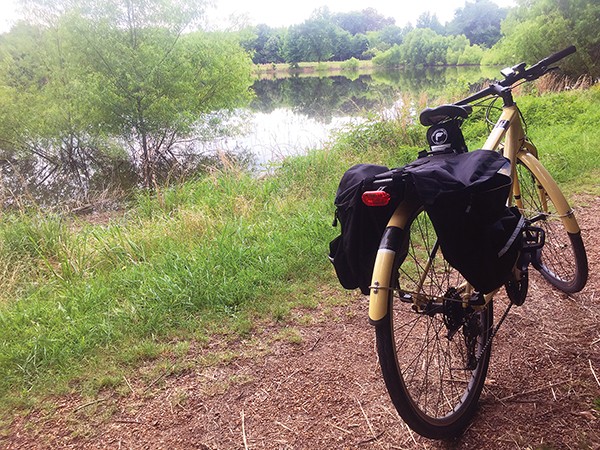 Toby Sells
Toby Sells
Sights and smells of my rural youth overtook me, fresh-cut hay fields, laces of green duckweed in the streams, fish in the ponds, soil, and (not of my youth) the park’s iconic herd of bison piling into a watering hole to beat the heat.
Past that, though, the Greenline was a straight shot. Halfway through the 6.5-mile trail from Shelby Farms to Midtown, I got tired, bored. The Greenline is great for safety, but there’s not much to see (but the bridges are cool).
The Greenline’s end at Tillman is a bit of a shock. You’re thrown smack-dab in the middle of an urban environment. Thunder boomed as I waited for a train on the Hampline at Broad. Then, fat drops of hot rain snapped on my helmet, then the bottom fell out of the sky. My fig bar got all soggy. I was drenched, but there was nothing to do about it.
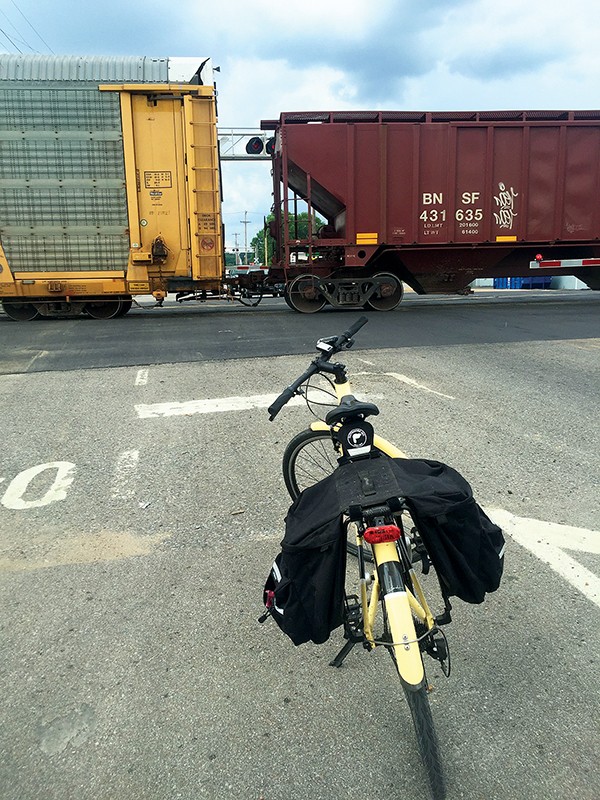 Toby Sells
Toby Sells
I then navigated the Hampline, marveling at how well-done it was but how different urban lanes are from the wild ones I’d come from. Cars were everywhere for Sunday lunch, and my old commuter senses were on high alert.
I felt back on home turf in Overton Park, the Old Forest, and, then, to the Greensward, a place I’ve spent a lot of time writing about.
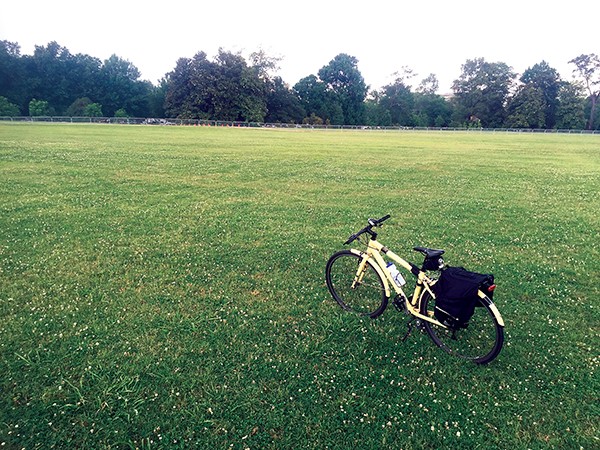 Toby Sells
Toby Sells
The bike lanes on North Parkway were welcome (but bumpy). When I saw the Pyramid, it really struck me how much my landscape had changed from my beginning at Las Tortugas — wild, pastoral, urban, urban parkland, neighborhoods, and now the city’s towering icons.
Main Street buzzed with late lunchers and the sounds of conversation and clinking glasses at patio tables at Local, Flight, the Majestic, and other downtown eateries. The Orpheum gleamed, and I felt comfortable on my commuter route again, and also knowing my day was nearly done.
I felt the pull to get a beer at Loflin Yard but knew I might never make it to the Harahan Bridge if I did that. So, I pedaled onto Channel 3 Drive and its brand-new, bike-friendly nature with wide streets and bike paths over Riverside Drive.
Construction gear lay everywhere at the gateway to what will be Big River Crossing. But I could plainly see where one day I (and thousands of others) will ride across the Mississippi River and, perhaps, one day, all the way to New Orleans.
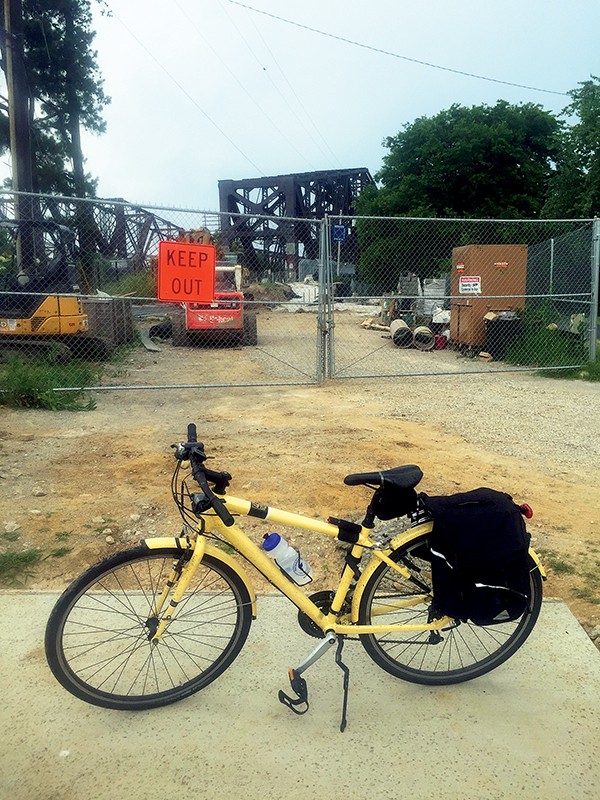 Toby Sells
Toby Sells
I can’t wait for that day, but this day’s adventure had been big enough. I’d ridden across my city and done so mostly on paths made just for me, well, for bikes. It felt good. And, like my friend Jason said, it was longer than I thought: 24 miles, about two-and-half hours. I counted 69 other cyclists.
But you don’t have to repeat my ride to have a good time. Just get out there and be a good bike person.